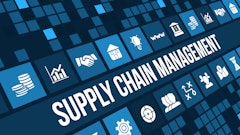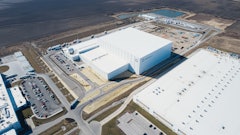The uncertain economy is putting more pressure than ever on the cold chain industry. Food manufacturers and distributors are looking to their warehousing and transportation providers for guidance to control costs while still expecting high-level services. Providers, meanwhile, are faced with tight capacity, decreasing inventory volumes, dramatic changes in customers’ supply chains and slow payment problems. Despite these harsh deterrents, providers are figuring out ways not only to stay in business, but to offer customers innovative and cost-effective solutions to manage their cold supply chains more efficiently. We will discuss some top trends affecting the industry today, followed by a roundtable discussion among industry participants.
The pressures to providers have been ramped up even more after the dismal year that was 2009, reports Jack Ampuja, president and CEO of Buffalo, NY-based Supply Chain Optimizers. “The top concern last year was simply to maintain revenues,” he says. “Just about everyone’s revenues and profit margins decreased and companies in the industry were simply trying to hold onto their market share.”
The tight and uncertain economy is driving food manufacturers and distributors to look for support and new cost-effective ideas from their transportation and logistics providers, continues Ampuja. “Companies today are getting away from the month-to-month kinds of deals of the past because that doesn’t serve anybody well. There is far too much uncertainty in that kind of relationship. So we are finding that manufacturers are shopping around and making long-term commitments with their providers. Warehouses appreciate this because now they can feel confident in committing to investments in technology and in their facilities.”
Capacity is yet another trend the industry must manage effectively, notes Joe Finney, vice president of LTL sourcing and supply chain engineering for Salt Lake City-based England Logistics. “There are carriers who have actually left the industry because of economic pressures and still others who have changed their business profile. Carriers on the LTL portion of the business who had been offering a lot of long-haul transportation have moved more toward a regional focus, which has affected some of our ability to find carriers. Some regional carriers have simply drawn themselves in and have limited their delivery area now because of economic reasons.”
One major trend involves customers wanting to streamline their supply chains, adds Gregg Claassen, regional vice president for Des Moines, IA-based Jacobson Cos. “Many times in the past, departments within companies would work independently and as separate entities to the point that departments like manufacturing, marketing and transportation were not communicating with each other. But today we are seeing that all of the departments within companies are trying to work together to find more efficiencies for their supply chains. This is critical because they discovered that you can be the best manufacturer/vendor in the world, but you still must have an efficient transportation/distribution network to support the movement of products to serve customers. Companies are working more closely than ever before to develop more efficient supply chains that run smoothly all the way to the end user.”
Supply chains in food and grocery had a lot more tolerance two to three years ago to accept the empty miles inherent in distribution systems, reports Jim Kitz, vice president of business development for Greatwide Logistics, Dallas. “But providers have to manage today’s economic pressures, the higher cost of fuel, and the move toward sustainability. These conditions came together at once so logistics providers had to find ways to match freight against trucks in order to reduce empty miles.”
Customers’ needs are changing at a faster pace than ever before, notes Christopher Ticknor, corporate marketing manager for Aspen Logistics Inc., Temecula, CA. “Things are speeding up, especially regarding government regulations that are changing constantly. We have to remain agile as we keep step with industry requirements. Customers are always looking for us to provide more transparency in their supply chains and they want an immediate sense of what is going on at all times, including knowing what their inventory levels are at any given time.”
Ask CEOs of food manufacturers what keeps them awake at night, and they will likely answer it is all about maintaining the safety and security of their products, says Ampuja. “It’s a matter of thinking about how to prevent sabotage. When I visit various locations, I see companies taking all the necessary precautions such as clocking people in and out, asking for IDs and controlling who handles what. If someone purposely compromises the security of the food supply chain, there would be widespread havoc. It’s a whole different level of awareness and security since 9/11.”
How is the economy affecting the industry?
Ampuja: This recession really forced companies to focus on how much inventory they could take out of their network and still do the job effectively. I think many companies surprised themselves on just how well they could manage at lower inventory levels, which actually did not affect service at all. Warehouses will tell you they watched their inventory levels reduce because their customers have learned to operate smarter. Although this hurts warehouses because they have less inventories on hand, this is a fact of life in that you can’t build a business on someone else’s inefficiencies; you have to figure out a way to work with your customers as they become more efficient. Ultimately, manufacturers will tell you that there is not a lot of value for them in having their products stored because their business is all about flowing product out into the marketplace. So this approach offers opportunities for warehouses to offer customers additional services providing more value. The more ways warehouses can help manufacturers get their products into the marketplace and maintain a good relationship with retailers, the more value there is on the table.
Ticknor: Our business has actually seen an increase in business. I think this is because many companies are looking to find a cheaper solution by getting rid of a lot of their in-house assets and outsourcing some of their fixed costs to a provider. There is a lot of liability involved when you purchase a fixed asset; then you have to weigh how much that fixed asset will be worth over the years. By using a contracted service, companies can remove that liability and let it become a 3PL’s responsibility.
Finney: Capacity is tight right now and has been since about March as some carriers left the industry because of the poor economy. However, we are still seeing the seasonality of the business that we have always seen. We have continued to keep our same customer base, which required us to get out and increase our carrier pool. We are considering different models relative to how we use our carriers, which could include putting them on a dedicated service.
Carriers will run long hauls when they know they will return loaded, so we are evaluating how to adjust using different methodologies. At times, we might have to change some of our margin expectations on some loads. We have also seen an increase in collection problems to the point where some companies need to prepay before we will pick up shipments. We are also seeing a lot more slow payers. This situation has been bubbling up since last year. Therefore, when we receive a new account on board, especially if it’s a good-sized account, we do our due diligence to assure they are credit-worthy and that they haven’t left another company for us because they had not been paying their bills.
Another factor relates to distributors not ordering in large volumes because they are not selling as much. They are giving up on truckload shipments because they don’t want to be stuck with product they can’t sell, so they are ordering more often and in smaller shipments because no one out there is overly confident in the current market conditions.
Claassen: The economy seems to be affecting everyone in every business psychologically. But with these difficulties comes opportunities. One such opportunity in our cold storage supply chain is there is a robust demand for our storage space. The main reasons for this is that manufacturers achieve efficiencies through large production runs. This drives their need for storage and for Jacobson’s services. The impact of the economy is driving companies like ours to diversify their portfolio of customers. What I mean is people always have the need to eat and they can eat at home or out at restaurants. When we are developing our customer base, we aim to achieve a good mix of foodservice and grocery customers. In doing so, we achieve a good balance of customers so no matter where people choose to eat, we have a continued demand to supply.
How do food safety regulations affect your business?
Kitz: Regulations relating to produce are driving requirements for speed to market and control over safety. Grocery companies need to move produce quicker and with more control than ever before because of recent salmonella outbreaks. Another factor are the hours regulations relating to the amount of time between when produce is harvested from the ground to the time it is processed. Add to this the challenge in the marketplace where the economy is beginning to show signs of improving, which means a challenge to find capacity. So there are economic pressures on the operating side as providers search for drivers and equipment, and on the product side, you have these regulatory pressures. Somewhere in the middle, there is efficiency.
Claassen: One main challenge we have concerning regulations relates to how they are developed. Many times as regulations are being developed, they might not be well thought through, especially when it comes to implementing and enforcing them. Although regulations might sound good in theory, it is very difficult to implement them effectively. Often overlooked is who will pay for the costs associated with these programs. Ultimately, manufacturers and distribution channels will have to pass along these costs to consumers.
It might be prudent to have a panel of people representing the industry to help design how regulations can be implemented practically and cost-effectively. We in the industry can work with those who are proposing these new regulations to assure that the proper infrastructure is in place to support regulatory programs. Further complicating things are the number of different agencies the industry is required to report information to. Often these agencies do not share information among themselves, which can cause confusion among the agencies.
Enforcement must also be considered when designing new regulations. If you are a company that is doing everything possible to comply with regulations and your competitor takes its chances, this can put you at a definite competitive disadvantage. There is always a cost associated with implementing and complying; so there must be an enforcement agency to assure everyone is in compliance.
Ampuja: The issue of safety regulations is one major concern keeping CEOs in the food industry awake at night. There is a lot of outsourcing, bringing products in from Canada, Mexico, and China primarily. Large companies more and more are taking a stand by not entrusting the traceability to overseas companies. Instead, they are sending their own people overseas to examine products and assure they are traceable.
A separate wrinkle for the frozen foods guys is the temperature piece, especially monitoring temperatures throughout the entire supply chain. Warehouses have had tracking mechanisms for years and have done a very good job verifying that temperatures have been kept at the required levels. But the big question is what happens when products go onto a truck. Putting temperature probes into products at the end of the supply chain doesn’t really tell you what happened along the way and this is where I think the fix will be using RFID to track temperatures all along the cold chain. Because you really want to be able to know what temperatures products have been exposed to at each handoff point along the chain.
How are you addressing customers’ sustainability concerns?
Claassen: Sustainability is taking on a higher profile than ever before. For instance, at Jacobson, we now have an environmental coordinator and we implement environmentally friendly programs that make sense to our company and to our customers. We are always looking for ways to cut costs and become more efficient in cooling our facilities and recycling all types of materials possible. When considering these opportunities, you should try to ensure there is a return on your investment before implementing these solutions.
Kitz: There is a heightened focus on green initiatives that are efficient in addressing economic issues and more companies desire to document sustainability practices for their companies. Just a few years ago, there were not too many of us in this space that even knew what a carbon footprint was, let along what some of the key metrics are to measure it. But in the past two to three years, we have seen more interest in the way our customer base bids their business to the provider market and in the ways in which we are measured as a provider.
Certainly, the expenditure of fuel and how it relates to moving product is a primary concern. There are a lot of miles run on the highway purely to reposition equipment, drivers, and other necessary resources. Many of those miles are not filled with product. So for us as a transportation logistics provider, that means we must focus on the reduction of total miles travelled and assure the efficient use of the miles we do run by eliminating the consumption of unnecessary fuel throughout the supply chain. Our customers want to know what we are doing to reduce emissions and fuel consumption.
To this end, we took three areas we manage and combined them into one platform to create synergies for customers where there hadn’t been any before. This platform includes our dedicated business unit, which has empty miles inherent as it runs closed loop assignments for retailers, grocers, and manufacturers; our brokerage unit, which finds transportation solutions to meet specific shipment requirements; and our MTS solution that manages transportation for customers on other carriers. Our goal is to eliminate empty miles by putting freight on all miles driven, thereby increasing efficiencies for our company and for our customers.
Ampuja: Anyone in the industry who ignores sustainability and the green movement is doing so at their own peril. Larger companies with sustainability procedures in place within their organizations want their service providers to be green as well. Some of the bigger companies are setting up sustainability offices and they are incorporating vice presidents of green or sustainability. Many companies are linking sustainability with their supply chain practices; what was once a director of logistics is now a director of logistics and sustainability. Many companies have had such practices in place for quite some time, but they just haven’t tracked or documented them, which they are doing now under the green umbrella.
How have customers’ needs changed over the last five years?
Kitz: I think this goes back to the efficiencies of our customers’ networks. For example, five years ago when a provider received a request for quote, it would typically require meeting service requirements from origin to destination. It meant meeting cost requirements on miles driven while meeting the demands of the supply chain. But you wouldn’t see mention of filling backhauls, assisting in filling empty miles, or reducing fuel—but now all of these are common. Our customers are telling us they want our participation as a logistics provider to find ways to put product on trailers and to generate revenue for every mile traveled, both for us and for them.
Claassen: Simply put, they want us to perform things for them better, quicker, and less expensively. When you are trying to take cost out of the equation—which is what everyone demands now—you just can’t afford to redo things, so they must be done right the first time. The other thing you see more today is the way customers want to sit down with providers to try to find ways to take cost out of operations on both sides, for them and for providers. Our customers are asking what they can do for us that will help take cost out of the equation, which will end up in a savings for everyone involved.
For example, I have a grocery customer we worked with to help them gain efficiencies at their retail level. We agreed to reconfigure the warehouse in the same configuration as their department layout in their stores. We pick their orders according to how they will unload and put products away in their stores. Now all they have to do is just go right down their aisles and stock their shelves. By doing this, they were able to achieve efficiencies on their labor costs.
Finney: Our customers are shipping fewer truckloads and more smaller-sized shipments today. We are also seeing customers pushing more than ever before for cold chain data. Data in the cold chain has not advanced as quickly as it has in the dry LTL or dry TL arena. But customers want to have that cold chain information at their fingertips and the technology in the industry is catching up with the requirements of customers.
What new services are you offering your customers?
Ticknor: Manufacturing plants are looking for the consolidation of all their suppliers and vendors so all raw materials, including packaging, are brought into one central warehouse operated by one company. We can transport and warehouse raw materials to support our customers’ manufacturing plants. We are providing this Aspen plant support solution to a number of larger firms throughout the country. We found that requests for this service have expanded within the last few years and it has become a viable niche business unit for us. Some of our customers use one of our dedicated warehouses, while others share space in a contract warehousing situation.
Ampuja: Providers are expanding the services they offer, especially at the warehouse level. If all you do is warehousing, that leaves you in one paradigm. On the other hand, if you can run a freight consolidation program, provide trucking, help companies on the inbound, help them with inventory management, and handle returns, your value to your customers increases significantly. Manufacturers are telling me that they are looking for more services and the guy that can provide a range of services is certainly more attractive.
Finney: We are in development now centered around technology that will allow us to offer our customers to access their data. Most shippers just don’t have the technology and they look to their providers to find out things like how much they shipped, when they shipped, what are the service days, and what the lead times are. They look to us for this information because they don’t have the funds to implement this kind of technology, so this is where the value proposition comes in for them to use 3PLs.
Claassen: It used to be that companies offered a single service such as transportation, warehousing or packaging—and maybe they offered one additional secondary service as a sideline. That model just doesn’t work anymore because customers demand that you be the best-in-class in all services you offer. Our customers want a single contact and a single source so they don’t have to shop and deal with multiple suppliers. They can purchase these services less expensively when they are bundled with one provider.
Kitz: Our new service on the produce side offers greater control, cost containment, and predictable speed. In keeping with the new produce regulations with its inherent time requirement, we can deploy a fleet moving from a farm to a packaging plant or from a farm to a DC and it’s our responsibility to fill some of the backhaul involved to keep that as an economical solution for our customers.
This is something we were not doing a few years ago because there wasn’t a demand because produce was warehoused, capacity was abundant, and there was not the time requirement there is today. Customers come to us for guaranteed capacity and predictability. They might have been getting a great rate from a one-way truckload carrier last year, but if that carrier doesn’t show up on time this year, those companies may simply run out of hours between the field and the processing plant before the produce is no longer usable.


























